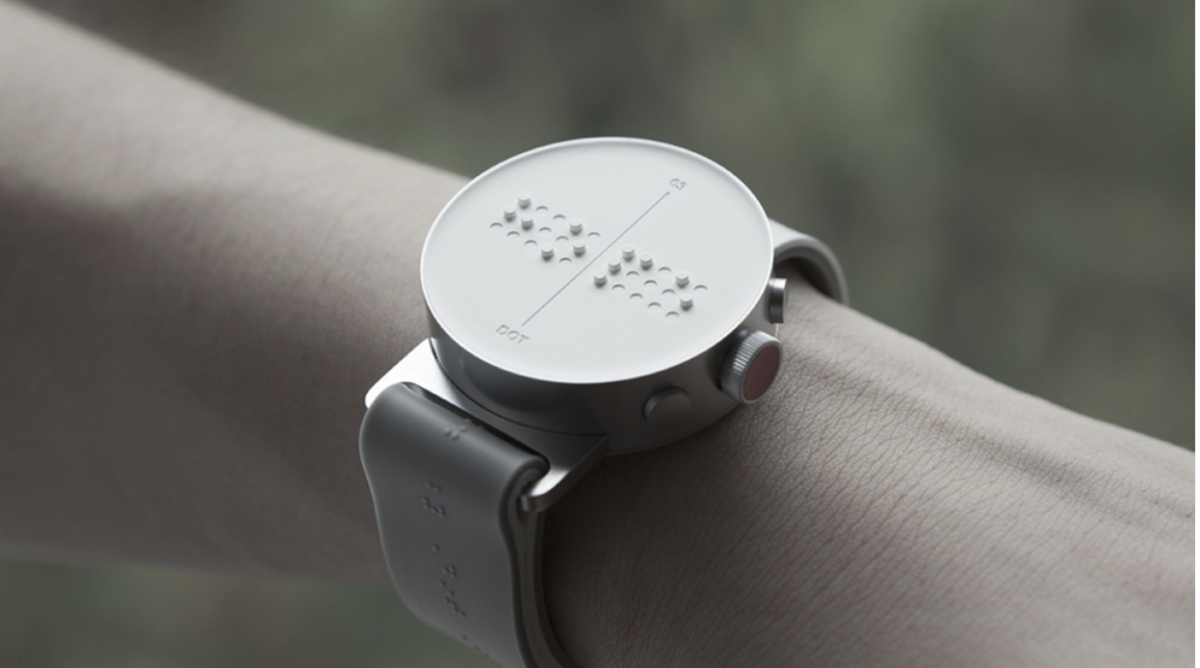PR/IR
News
News
- Date
- 2017.02.22 00:00
SEOUL -- Next month, the Dot smartwatch will finally hit shelves, offering a sleek timepiece for the blind.
The watch is coming to the market after nearly three years of repeated stops and starts.
Unlike most assistive smartwatches for the blind which rely on audio prompts, the Dot displays messages four braille characters at a time on its screen.
Its round face displays four cells of six balls each, and allows users to send simple replies or actions back through its two side buttons.
Dot, the eponymous South Korean startup behind the watch, has been developing the product since 2014, but hit delays in sorting out the display's durability, as the tiny moving parts were hard to protect while remaining tactile, it said.
But starting March, the company will finally start delivering the watch to some 140,000 backers -- including Stevie Wonder himself, the company claims.
Dot is targeting 100,000 of those watches to be shipped out in 2017, with 40,000 on the waiting list for next year. A smaller batch of 1,000 units will go on retail shelves in London, for $320 too. (The price will vary a little depending on country.)
If you vaguely remember something that resembled the Dot floating around the internet, it could've been the Dot itself -- in an early iteration that resembled a Fitbit more than a watch.
Eric Juyoon Kim, founder and CEO of Dot, said the watch is just the first step in a bigger picture offering braille devices to the blind, especially those in developing markets, where the vast majority of visually-impaired reside.
Dot has signed a $1 million agreement with Kenya’s government to bring 8,000 units of its upcoming Dot Mini, an educational braille reader, with an aim to be sold below cost for around $200 each.
It also has plans in cooperation with Google for a 2018 launch of the Dot Pad, a tactile Kindle-like ereader that will display shapes and images through tactile buttons, that could help with learning math or even art. Eventually, the company's smart braille system could find its way onto public infrastructure as well, helping to make this world just a little more inclusive.


 Prev
Prev
 Next
Next









